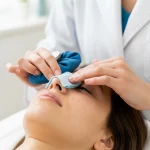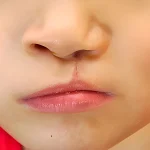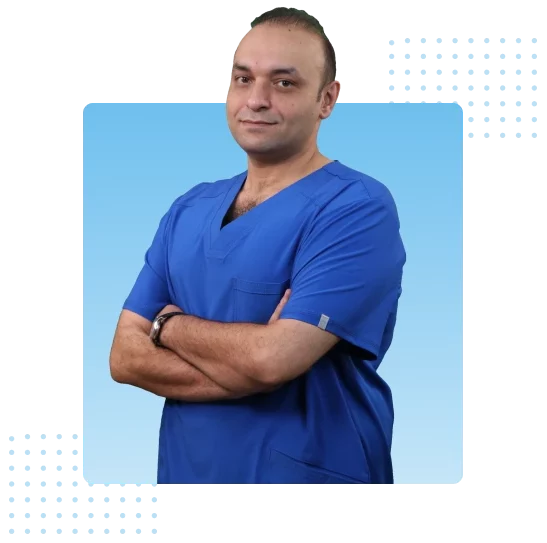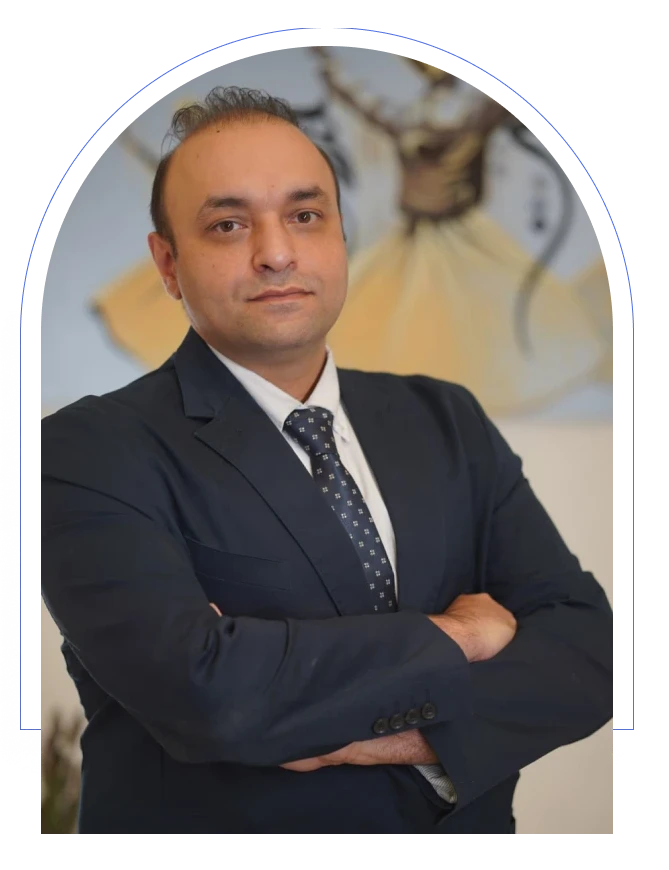Deciding to undergo rhinoplasty is a significant step towards achieving facial harmony and improving your confidence. However, when the results of your first surgery don’t meet your expectations, either aesthetically or functionally, it can be disheartening. This is where revision rhinoplasty comes in.
This complex procedure is designed to correct and refine the outcome of a previous nose surgery. If you’re feeling dissatisfied with your initial results, you are not alone. This ultimate guide will walk you through everything you need to know about revision rhinoplasty, from candidacy and surgical techniques to recovery, costs, and choosing a highly qualified surgeon.
What Is Revision Rhinoplasty?
Revision rhinoplasty, also known as secondary rhinoplasty or a revision nose job, is a surgical procedure performed to alter the form or function of the nose after a previous rhinoplasty. Its goal is to address the shortcomings of the primary surgery, which may range from minor cosmetic imperfections to significant structural and breathing problems.
According to Cleveland Clinic:
“Rhinoplasty, also known as a nose job, is one of the most popular types of cosmetic surgery. Rhinoplasty reshapes your nose to improve your appearance or to fix medical problems that interfere with how you breathe. It can correct a deviated septum or a broken nose.”
Difference between Primary and Revision Rhinoplasty
While both are forms of nose surgery, revision rhinoplasty is significantly more complex than a primary procedure for several key reasons:
- Altered Anatomy: The surgeon is working on a structure that has already been surgically modified. The natural anatomy of cartilage and bone has been changed.
- Scar Tissue: Internal scar tissue (fibrosis) from the first surgery makes the procedure more challenging and healing more unpredictable.
- Reduced Cartilage: The primary surgery may have removed a significant amount of septal cartilage, often requiring the surgeon to harvest new cartilage from the ear or rib to rebuild the nasal structure.
- Patient Psychology: Patients are often more anxious and have very specific concerns based on their previous negative experience.
Common Reasons for Revision Surgery
Patients seek rhinoplasty correction for two main categories of reasons:
۱. Aesthetic Dissatisfaction:
- Asymmetry: The nose appears crooked or uneven.
- Unnatural Shape: A “scooped” bridge (saddle nose deformity), a pinched tip, or an upturned “piggy” nose.
- Persistent Bumps: A dorsal hump was not sufficiently reduced or has reappeared.
- Tip Issues: The nasal tip is too wide, too narrow, droopy, or lacks definition.
۲. Functional Problems:
- Breathing Difficulties: The most common functional complaint, often caused by a collapsed nasal valve, a deviated septum that wasn’t corrected, or excessive tissue removal.
- Nasal Obstruction: A feeling of constant stuffiness or blockage.
- Chronic Sinus Issues: Worsened or new sinus problems post-surgery.
Who Is a Candidate for Revision Rhinoplasty?
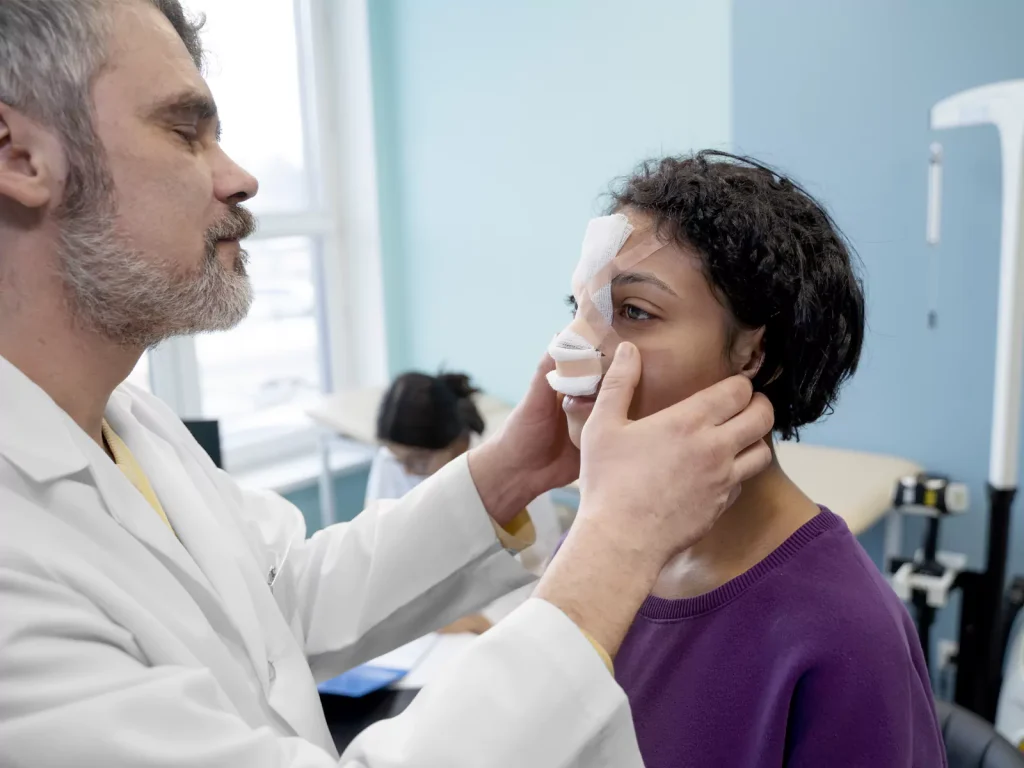
A good candidate for revision rhinoplasty is someone who is in good overall health, has realistic expectations, and understands the complexities of a secondary surgery. Candidacy is determined by several key factors, which we will explore below, including specific aesthetic concerns, functional issues, and the patient’s psychological readiness.
۱. Aesthetic Concerns (Asymmetry, Irregular Shape)
If you are troubled by the cosmetic outcome of your first surgery, such as a crooked bridge, a poorly defined tip, or nostril asymmetry, you may be a candidate. It is essential to have a clear, specific idea of what you would like to correct.
۲. Functional Issues (Breathing Problems, Collapsed Nasal Valve)
For many, the need for a functional rhinoplasty revision is paramount. If your breathing is worse after your first surgery, it’s a clear indication that a revision may be necessary. A surgeon specializing in revision procedures can diagnose issues like nasal valve collapse or septal perforation and create a plan to restore proper airflow.
۳. Psychological Readiness and Timing Considerations
Patience is crucial. Surgeons recommend waiting at least ۱۲ to 18 months after your primary rhinoplasty before considering a revision. This allows the swelling to fully subside and the nasal tissues to soften, giving a clear picture of the final result. It also ensures you are psychologically prepared for another surgical journey and have realistic goals for improvement, not perfection.
The Revision Rhinoplasty Procedure
The revision rhinoplasty procedure is complex and customized for each patient. Understanding what this surgery entails involves looking at several key components, which we will cover below: the specific surgical techniques required, the common use of cartilage grafts for reconstruction, and the surgeon’s choice between an open versus a closed approach.
Surgical Techniques and Complexity
Due to scar tissue and altered anatomy, the surgeon must be incredibly precise. The operation often takes longer than a primary rhinoplasty. The surgeon’s goal is to carefully dissect the tissues, identify the existing framework, and execute a plan to correct the deformities.
Use of Cartilage Grafts (Ear, Rib, Septum)
Structural support is the foundation of a successful rhinoplasty. If the primary surgery compromised the nose’s structural integrity, the surgeon must rebuild it. This almost always requires cartilage grafts.
- Septal Cartilage: The ideal source, but often depleted during the first surgery.
- Ear Cartilage (Auricular): Good for adding shape and contouring the nasal tip but is curved and less rigid.
- Rib Cartilage (Costal): The strongest and most abundant source. It is used for major structural repairs, such as rebuilding the nasal bridge or correcting a collapsed nose.
Open vs. Closed Revision Rhinoplasty
- Closed Rhinoplasty: All incisions are made inside the nostrils. This approach is suitable for very minor revisions but offers limited visibility.
- Open Rhinoplasty: Involves an additional small incision across the columella (the skin between the nostrils). This is the preferred technique for almost all nose revision surgery cases because it provides the surgeon with direct, unobstructed visibility of the underlying nasal structures, which is critical for complex corrections.
Risks and Challenges of Revision Surgery
It’s essential to understand that revision rhinoplasty carries higher risks than primary rhinoplasty. Let’s explore some of these key challenges and potential complications in more detail.
۱. Higher Difficulty Compared to First Rhinoplasty
The presence of scar tissue makes the procedure technically demanding and the healing process less predictable. The compromised blood supply can also affect healing. This is not a procedure for an inexperienced surgeon.
۲. Potential Complications and How to Minimize Them
While complications are rare with a skilled surgeon, they can include:
- Infection or bleeding
- Poor wound healing or scarring
- Numbness or changes in skin sensation
- Nasal asymmetry
- Graft visibility or warping over time
- Persistent breathing problems
- Dissatisfaction with the cosmetic result
The single most important way to minimize these risks is to choose a board-certified plastic surgeon or facial plastic surgeon who specializes specifically in revision rhinoplasty.
Recovery and Healing Process
Recovery after a revision can be similar to or slightly longer than a primary procedure due to the increased extent of the surgery.
Expected Recovery Timeline
- Week 1: You will wear an external splint. Bruising and swelling around the eyes are common.
- Weeks 2-4: The majority of the noticeable swelling and bruising will subside. You can typically return to social activities.
- Months 1-3: You can resume strenuous exercise. The nose will continue to refine, but it will still feel stiff and swollen.
- Months 6-18: The final results will emerge as the last bit of swelling disappears. The healing from a revision can take up to two years to fully settle.
Post-Surgery Care Tips
- Sleep with your head elevated on 2-3 pillows.
- Avoid strenuous activity, heavy lifting, and bending over.
- Do not wear glasses that rest on your nasal bridge.
- Attend all follow-up appointments with your surgeon.
Long-Term Results
The goal of revision rhinoplasty is improvement, not perfection. A successful revision creates a more balanced, natural-looking nose that functions properly and restores the patient’s confidence.
Cost of Revision Rhinoplasty
The cost of secondary rhinoplasty in Iran is almost always higher than that of primary surgery due to its complexity and longer operative time.
Average Price Range
On average, revision rhinoplasty can range from $۱۰,۰۰۰ to $25,000 or more.
Factors Affecting the Cost are:
- Surgeon’s Fee: Highly experienced revision specialists command higher fees.
- Geographic Location: Costs vary significantly between different cities and states.
- Surgical Facility & Anesthesia Fees: Hospital vs. private surgical center costs.
- Complexity of the Case: A minor tip refinement will cost less than a full nose reconstruction requiring a rib graft.
Insurance and Financing Options
Revision rhinoplasty is typically considered a cosmetic procedure and is not covered by insurance. However, if the surgery is performed to correct functional issues like breathing problems resulting from the first surgery, insurance may cover a portion of the costs. Many clinics also offer patient financing plans.
Choosing the Right Surgeon for Revision Rhinoplasty
This is the most critical decision you will make. Do not return to your original surgeon unless they have extensive experience in revision procedures.
Qualifications and Experience to Look For
- Board Certification: In Plastic Surgery or Facial Plastic and Reconstructive Surgery.
- Specialization: Look for a surgeon whose practice is heavily focused on rhinoplasty and, specifically, revision rhinoplasty.
- Extensive Experience: They should have performed hundreds of revision procedures and be comfortable with advanced techniques like cartilage grafting.
Find Your Revision Rhinoplasty Specialist
Choosing a surgeon with a global reputation for excellence provides significant peace of mind. Dr. Armin Akbari is a renowned specialist in revision rhinoplasty, known for his meticulous approach to complex secondary surgeries. His expertise is sought after by a large number of international patients from around the world who travel specifically for his advanced corrective techniques.
Schedule Your Consultation with Dr. Akbari Today
Questions to Ask During Consultation with Revision Rhinoplasty Surgeon
- How many revision rhinoplasties do you perform each year?
- Can I see before-and-after photos of patients with cases similar to mine?
- What is your proposed surgical plan for my nose?
- Will you be using an open or closed approach, and why?
- What type of cartilage graft, if any, do you anticipate I will need?
Before-and-After Photos and Patient Reviews
Scrutinize their photo gallery. Look for patients who had similar issues to yours and assess if their results look natural and improved. Read patient reviews on reputable sites to gauge their experience with the surgeon and their team.
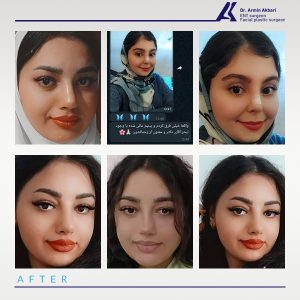
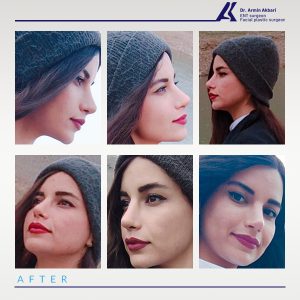
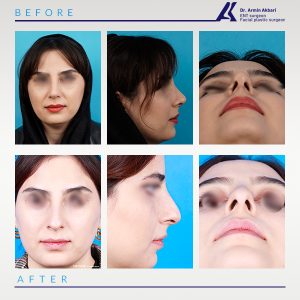
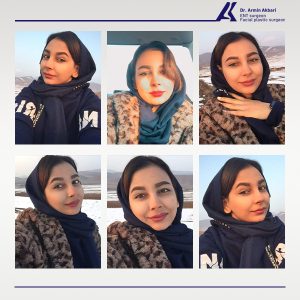

Alternatives to Revision Rhinoplasty
For some patients with very minor defects, non-surgical options may be a temporary solution.
Non-Surgical Options (Fillers, Liquid Rhinoplasty)
Injectable dermal fillers can be used to camouflage minor irregularities, fill in depressions, or smooth out a slightly bumpy bridge. This is often called “non-surgical rhinoplasty” or “liquid rhinoplasty.” However, it is crucial to understand that the results are not permanent and this method cannot help a patient as much as surgery can. For fundamental problems, such as significant structural issues, it will have little to no effect.
When Non-Surgical Methods May Be Effective
Fillers are best for small, localized contour defects. They cannot fix breathing problems, reduce the size of the nose, or correct major structural issues. The results are temporary, lasting from 9 to 18 months, and require ongoing maintenance.
Final Thoughts: Is Revision Rhinoplasty Right for You?
Facing a failed rhinoplasty is emotionally and physically taxing. However, a well-planned and expertly executed revision rhinoplasty can correct past problems, restore function, and finally give you the results you initially hoped for.
The path to a successful revision starts with thorough research, realistic expectations, and, most importantly, the selection of a true expert in the field.
Ready to take the next step? Schedule a consultation with an experienced revision rhinoplasty surgeon to discuss your specific concerns and create a personalized treatment plan.
Frequently Asked Questions (FAQs)
How long should I wait before getting revision rhinoplasty?
It is critical to wait at least one year, and preferably 18 months, after your initial surgery. This allows all swelling to resolve and scar tissue to soften, ensuring the surgeon can accurately assess the issues and perform the correction effectively.
Is revision rhinoplasty more painful than the first surgery?
Pain is generally comparable to the primary surgery and is well-managed with prescribed medication. However, the recovery period can feel longer, as swelling may persist for a greater duration due to the increased complexity of the procedure.
What is the success rate of revision rhinoplasty?
The success rate is very high in the hands of a true revision specialist. Success is defined as a significant improvement in both the form and function of the nose that meets the realistic, mutually agreed-upon goals of the patient and surgeon.
Can revision rhinoplasty fix breathing problems?
Yes, absolutely. Correcting functional issues is a primary goal of many revision procedures. An expert surgeon can repair a collapsed nasal valve, straighten a residual septal deviation, or widen nasal passages to significantly improve airflow.
How much does revision rhinoplasty cost on average?
The cost varies widely based on the surgeon’s expertise, geographic location, and the complexity of the surgery, but it typically ranges from $10,000 to over $25,000. It is more expensive than primary rhinoplasty due to the increased difficulty and time required.
